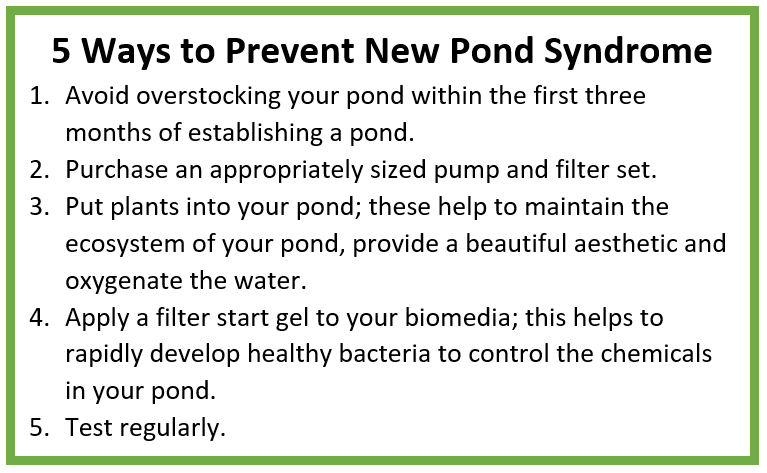Cloudy Water

As always, if you experience any sudden changes in your pond, we recommend that you test the pond with either the Tetra 6-in-1 Test Kit or the Blagdon Dip Test Kit. PondXpert's Anti-Cloudy Water can also be used to treat the water if it has went cloudy.
Sludge / Decaying Matter (Useful Blogs: Pond Sludge, Filters & Their Maintenance, Filtration)
Cloudy water is normally caused by decaying organic matter in the pond. This can be excess food, decaying plant matter or fish waste. A popular treatment for sludge is the PondXpert Sludge Eliminator. This powder treatment will help to remove any sludge at the bottom of your pond. Manually removing the sludge with a net, treatment or a vacuum is also recommended throughout the year.
It’s really important that you keep your filter maintained. This means washing the foams and replacing the UV bulb in it after 6 months of continuous use. If you are continuously having problems with cloudy water, it may be that your filtration system is not suitable for the pond as the number of fish increase. The general guide for fish levels in ponds is below (1" of fish is approximately 30g):
• 3kg of Golfish per 1000 litres of pond water e.g. 4000 litre pond will support up to 12kgs of Goldfish
• 1kg of Koi per 1000 litres of pond water e.g. a 4000 litre pond will support up to 4kgs of Koi
We are always happy to help identify if your system is suitable for the volume of water in your pond and the types of fish present.

New Pond Syndrome (NPS) (Useful Blogs: New Pond Syndrome, Bacteria: The Importance of Healthy Bacteria)
If your pond has been recently set up, it will be susceptible to chemical changes as your pond's ecosystem develops and matures. This is commonly called 'New Pond Syndrome (NPS)'. This may include ammonia/nitrite/nitrate spikes as your pond's Nitrogen Cycle begins, discoloured water or other signs of chemical imbalances. This process can take several months and is perfectly natural. It is important that you keep an eye on your pond after establishing it; look out for any of the following NPS symptoms:
• Foam on the surface of the pond
• Green, slimey algae developing on the liner
• High ammonia/nitrite/nitrate readings when you test the water
• Fish that are not eating, gasping at the surface of the pond or are sulking away from other fish.
• Fish are showing signs of stress.
To balance the chemicals and bacteria in the pond, you can use our PondXpert Gel Balls. These release a healthy dose of healthy bacteria into the pond alongside treating any ammonia, nitrites and nitrates in the pond. Using a Filter Start Gel allows the bacteria to develop rapidly in your filter, reducing the impact of NPS.

If your pond is suffering from a lack of oxygen, there will be less healthy bacteria in the pond. This bacteria is normally very good at encouraging the decomposition of the sludge in the pond; keeping your pond healthy and chemically balanced.
Clear signs of your pond needing extra aeration include:
• Fish gasping at the surface of the pond.
• Foul odours.
• Rapid algae development.
You can aerate a pond by installing an air pump, waterfall, a fountain or adding plants. Plants also compete with algae for the pond's chemicals, which prevents algae blooms while providing a natural display around your pond.
If you need any further assistance, please contact us.